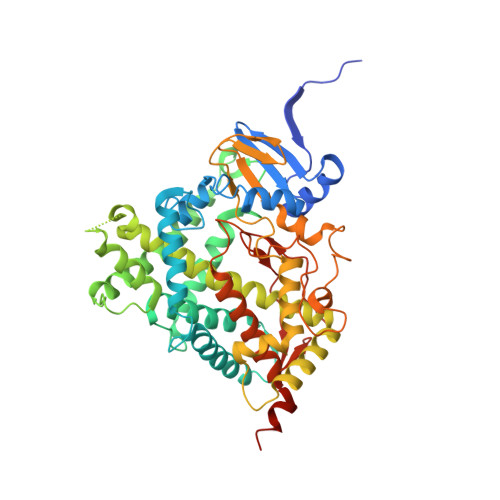Structure-Based Design of Inhibitors with Improved Selectivity for Steroidogenic Cytochrome P450 17A1 over Cytochrome P450 21A2.
Fehl, C., Vogt, C.D., Yadav, R., Li, K., Scott, E.E., Aube, J.(2018) J Med Chem 61: 4946-4960
- PubMed: 29792703
- DOI: https://doi.org/10.1021/acs.jmedchem.8b00419
- Primary Citation of Related Structures:
6CHI, 6CIR, 6CIZ - PubMed Abstract:
Inhibition of androgen biosynthesis is clinically effective for treating androgen-responsive prostate cancer. Abiraterone is a clinical first-in-class inhibitor of cytochrome P450 17A1 (CYP17A1) required for androgen biosynthesis. However, abiraterone also causes hypertension, hypokalemia, and edema, likely due in part to off-target inhibition of another steroidogenic cytochrome P450, CYP21A2. Abiraterone analogs were designed based on structural evidence that B-ring substituents may favorably interact with polar residues in binding CYP17A1 and sterically clash with residues in the CYP21A2 active site. The best analogs increased selectivity of CYP17A1 inhibition up to 84-fold compared with 6.6-fold for abiraterone. Cocrystallization with CYP17A1 validated the intended new contacts with CYP17A1 active site residues. Docking these analogs into CYP21A2 identified steric clashes that likely underlie decreased binding and CYP21A2 inhibition. Overall, these analogs may offer a clinical advantage in the form of reduced side effects.
Organizational Affiliation:
Department of Medicinal Chemistry , University of Kansas , Lawrence , Kansas 66047 , United States.
















